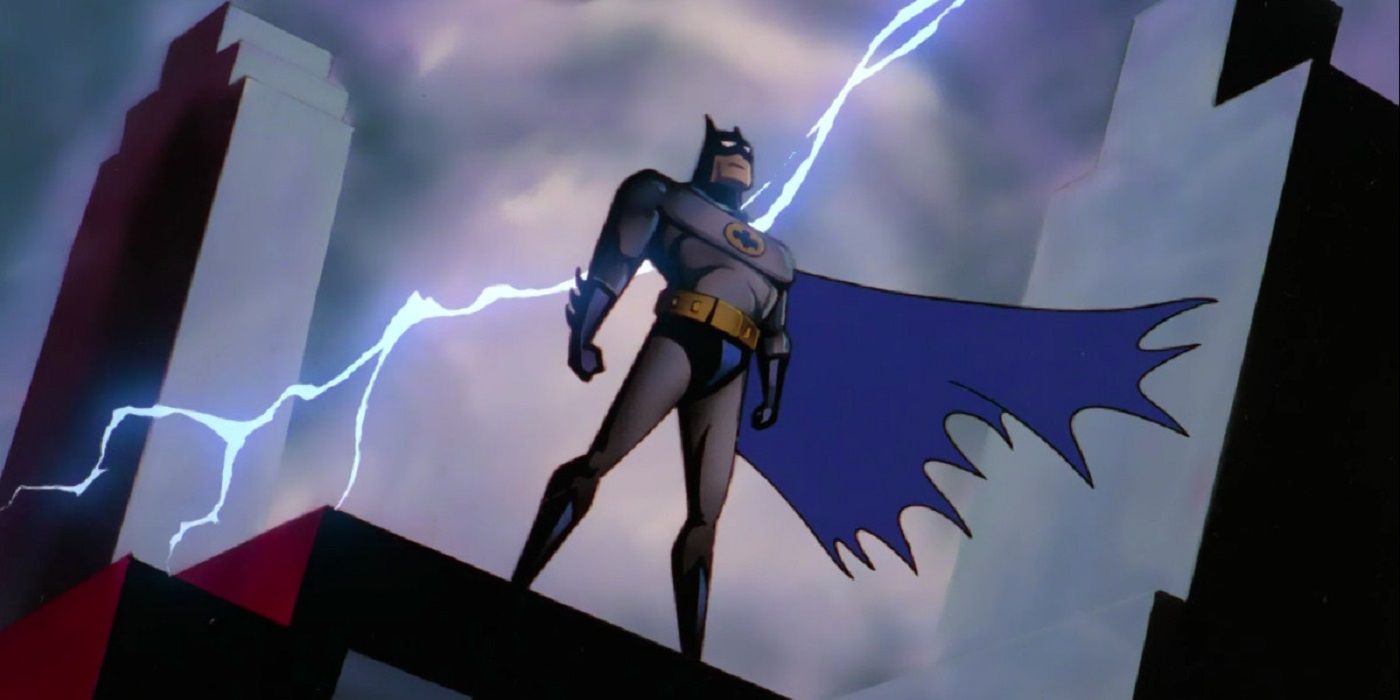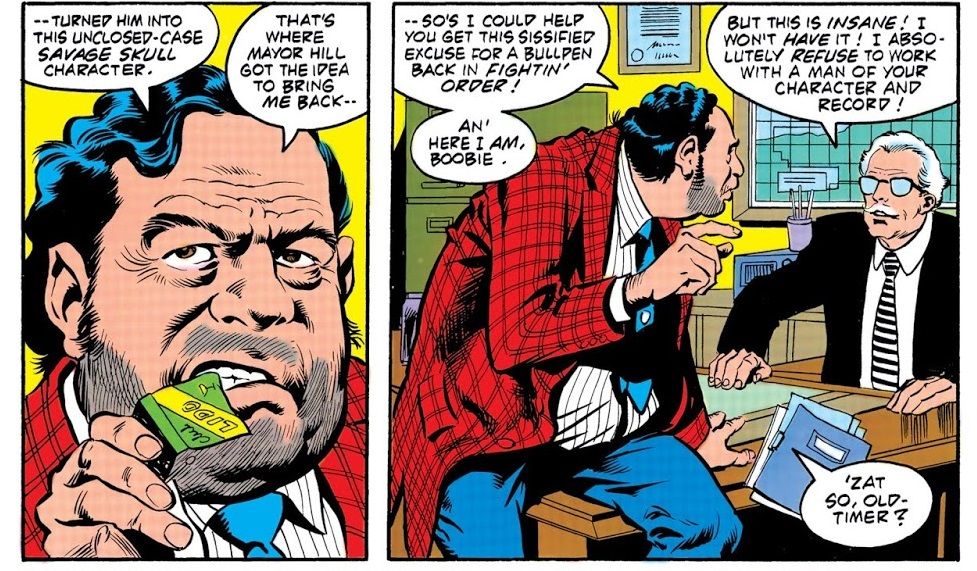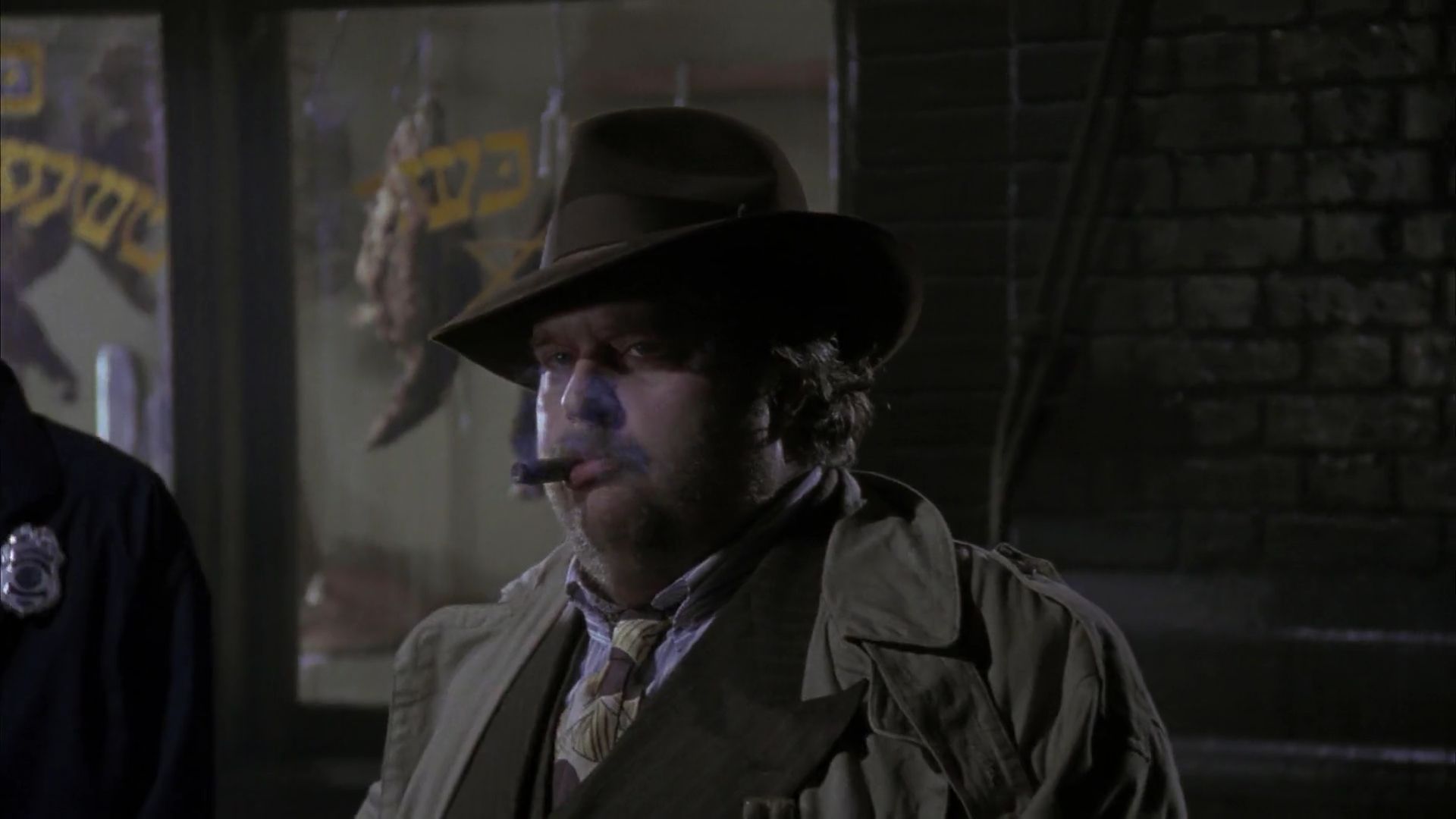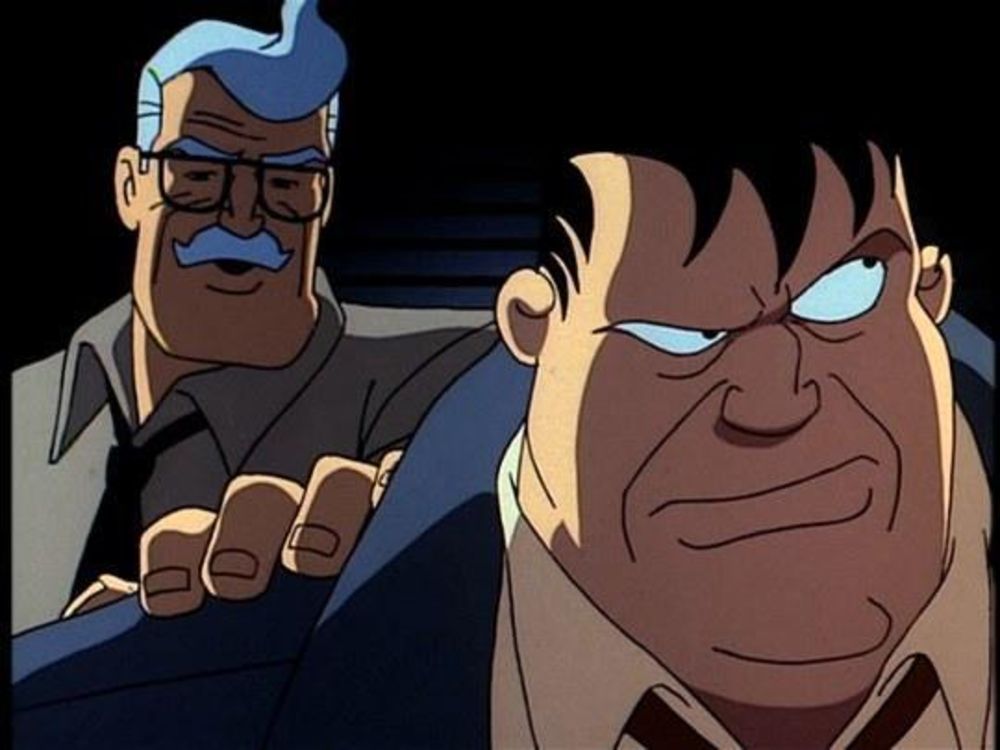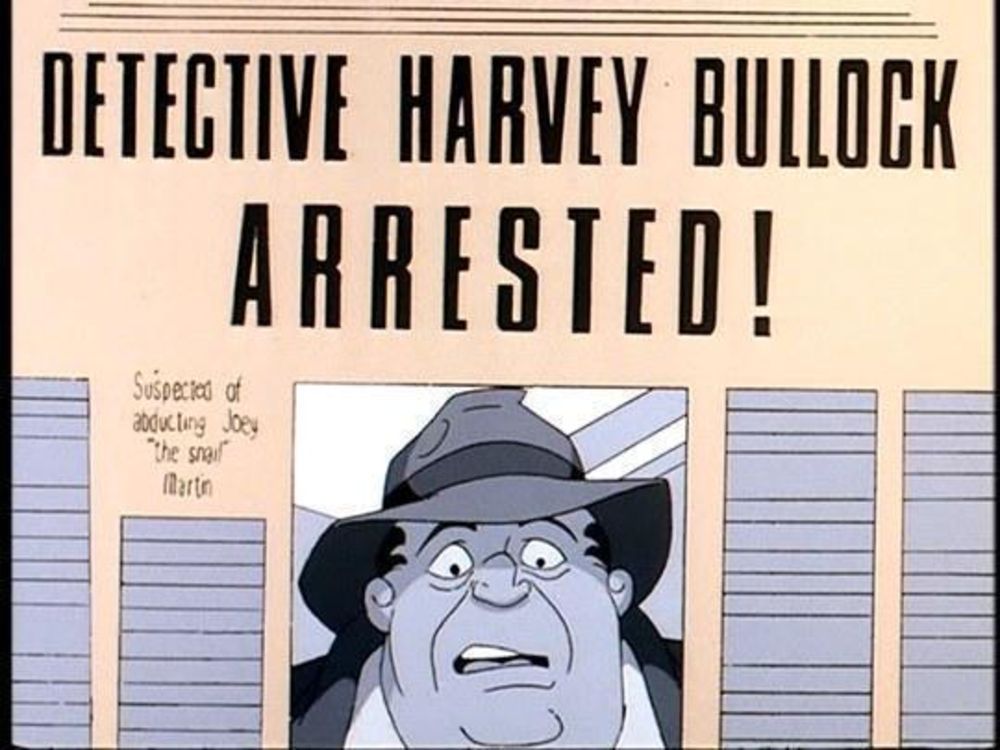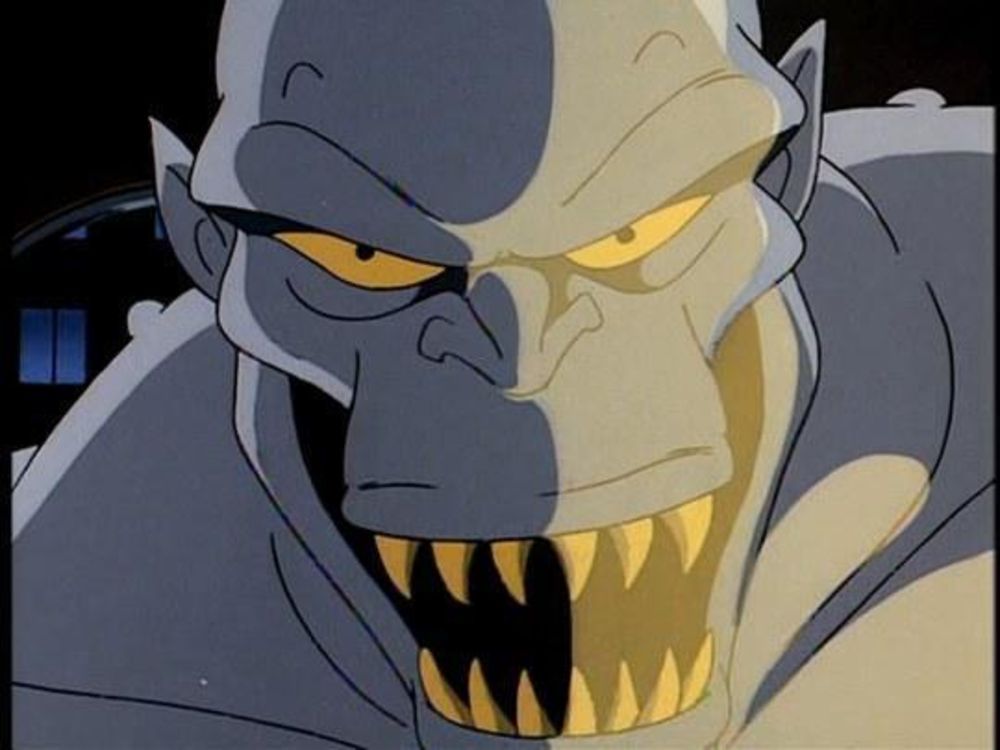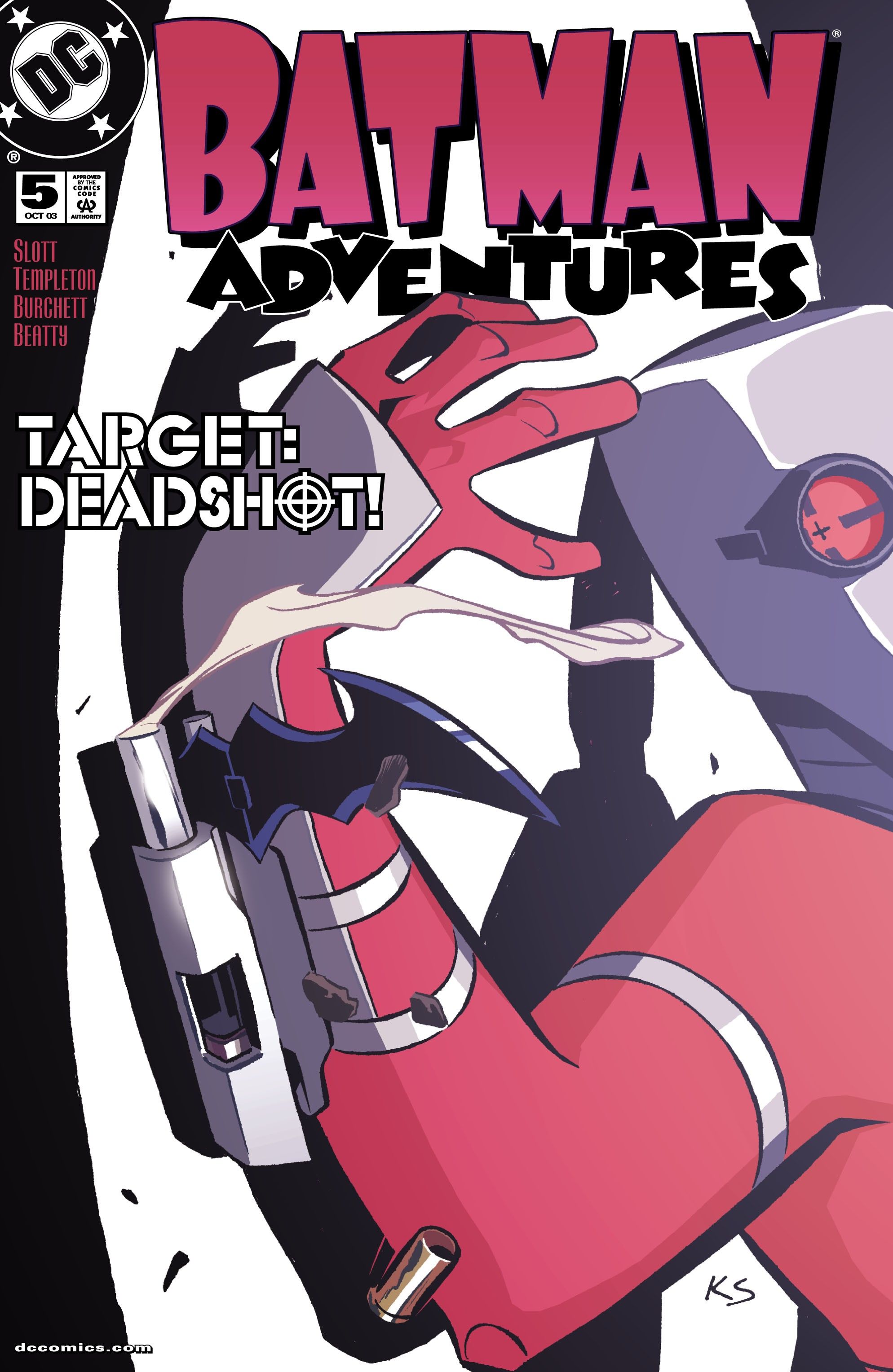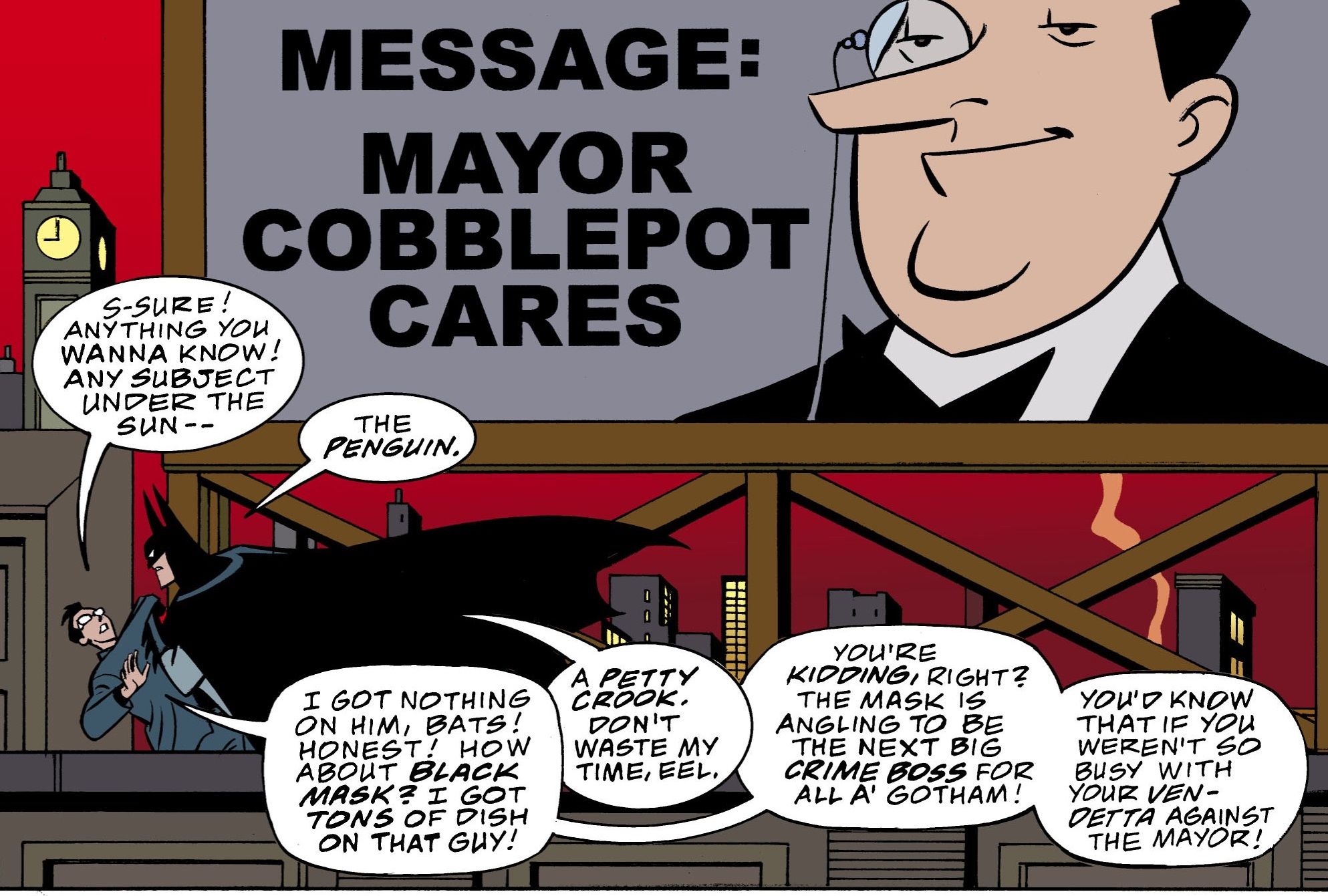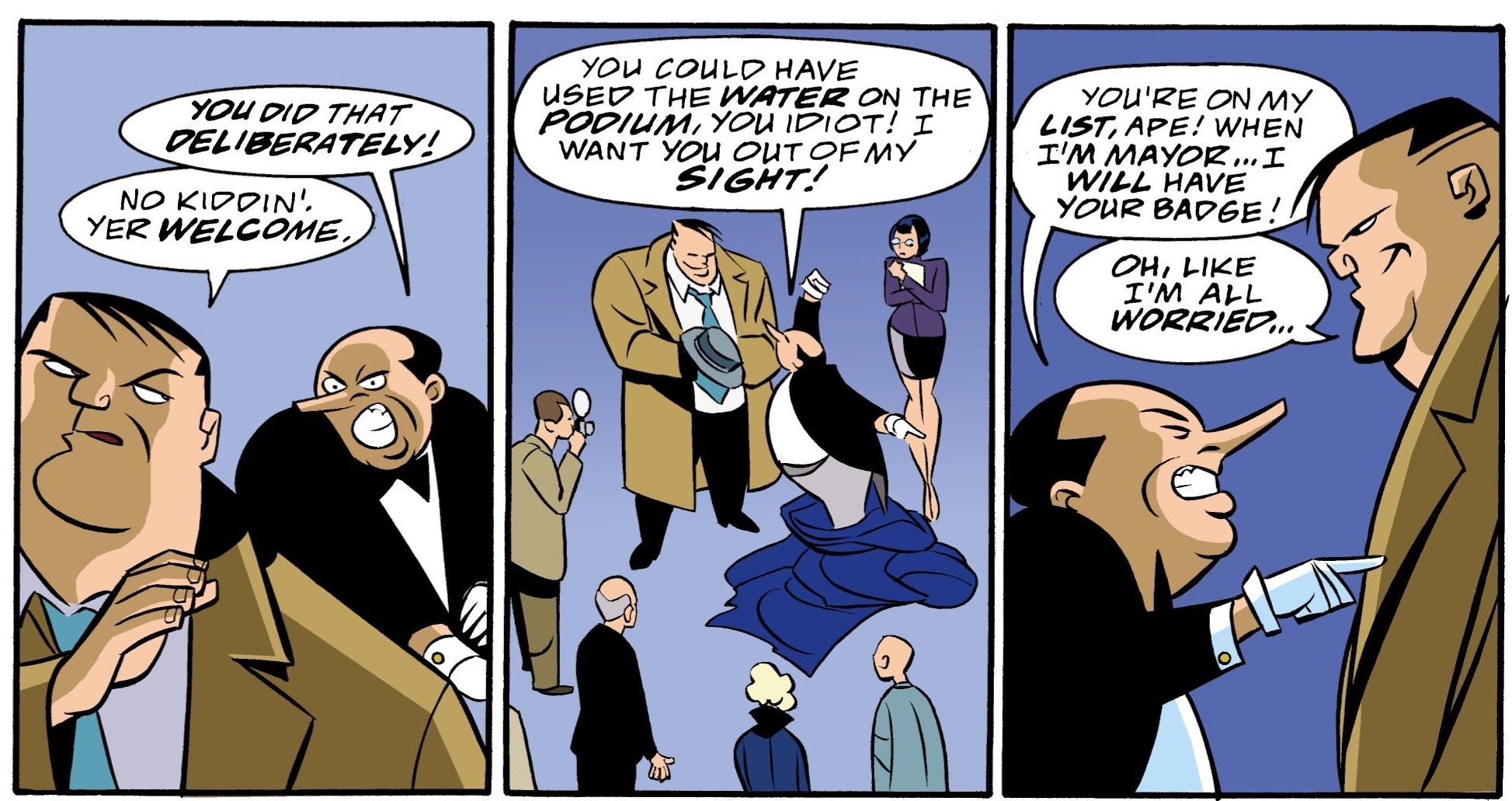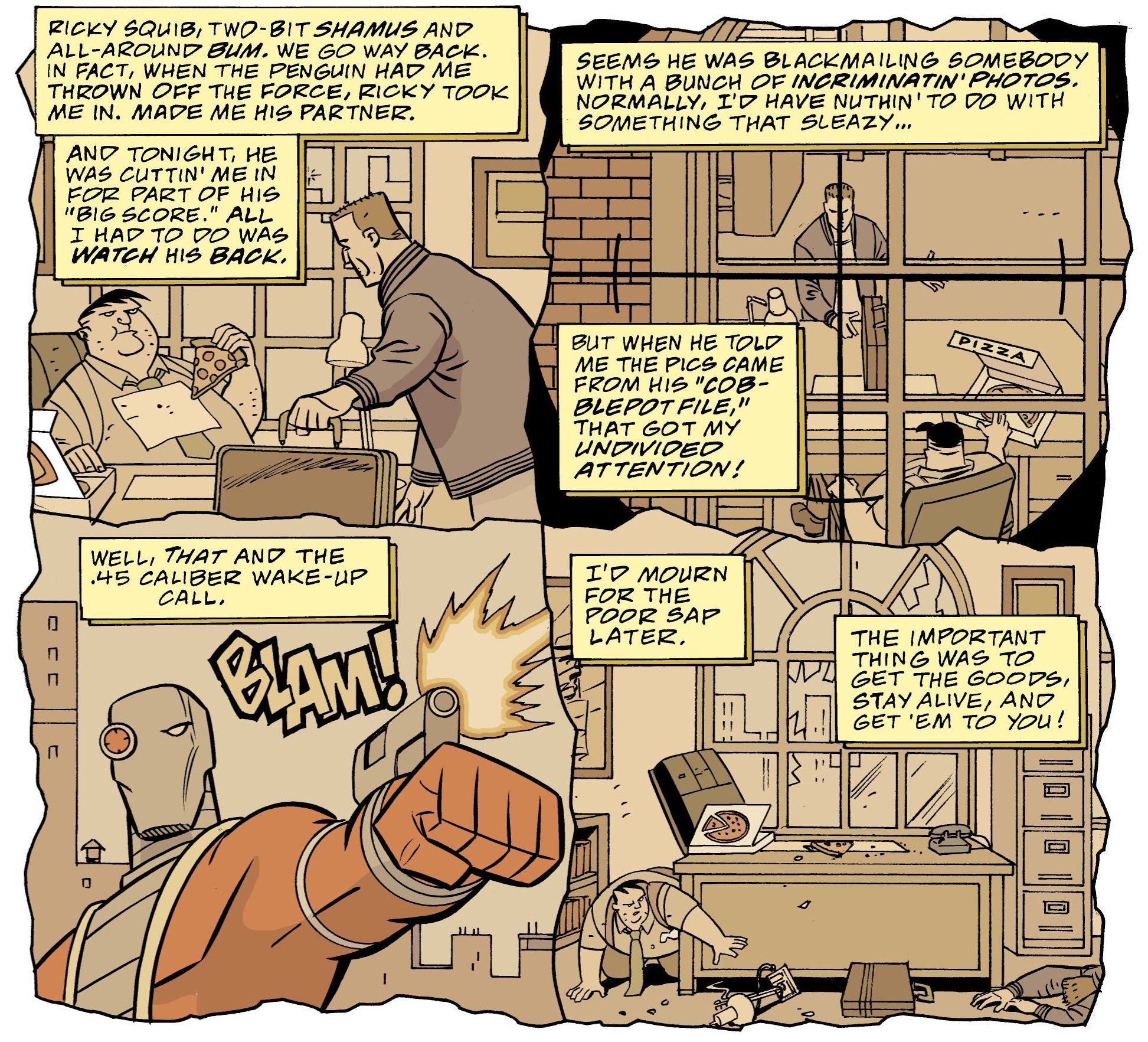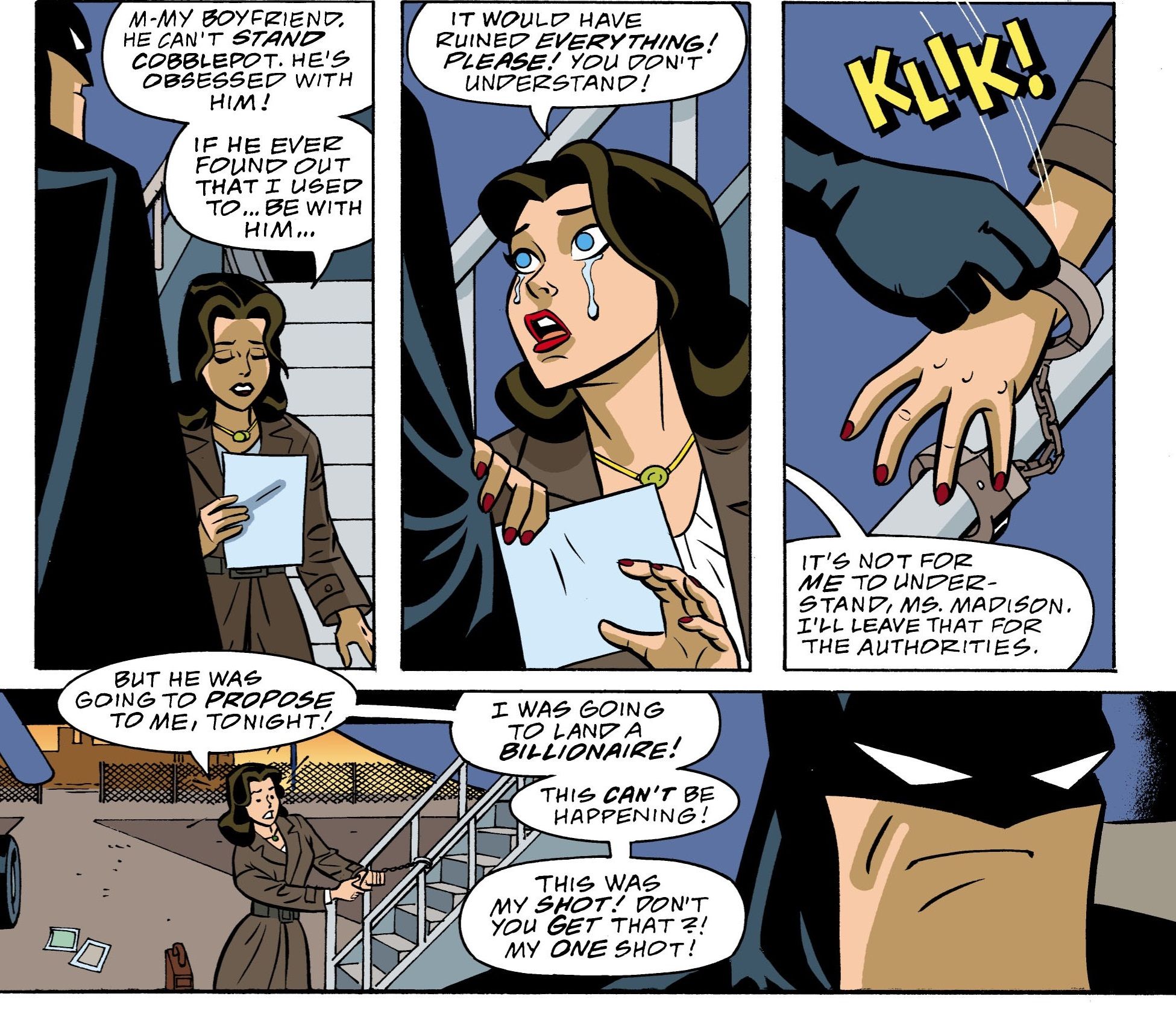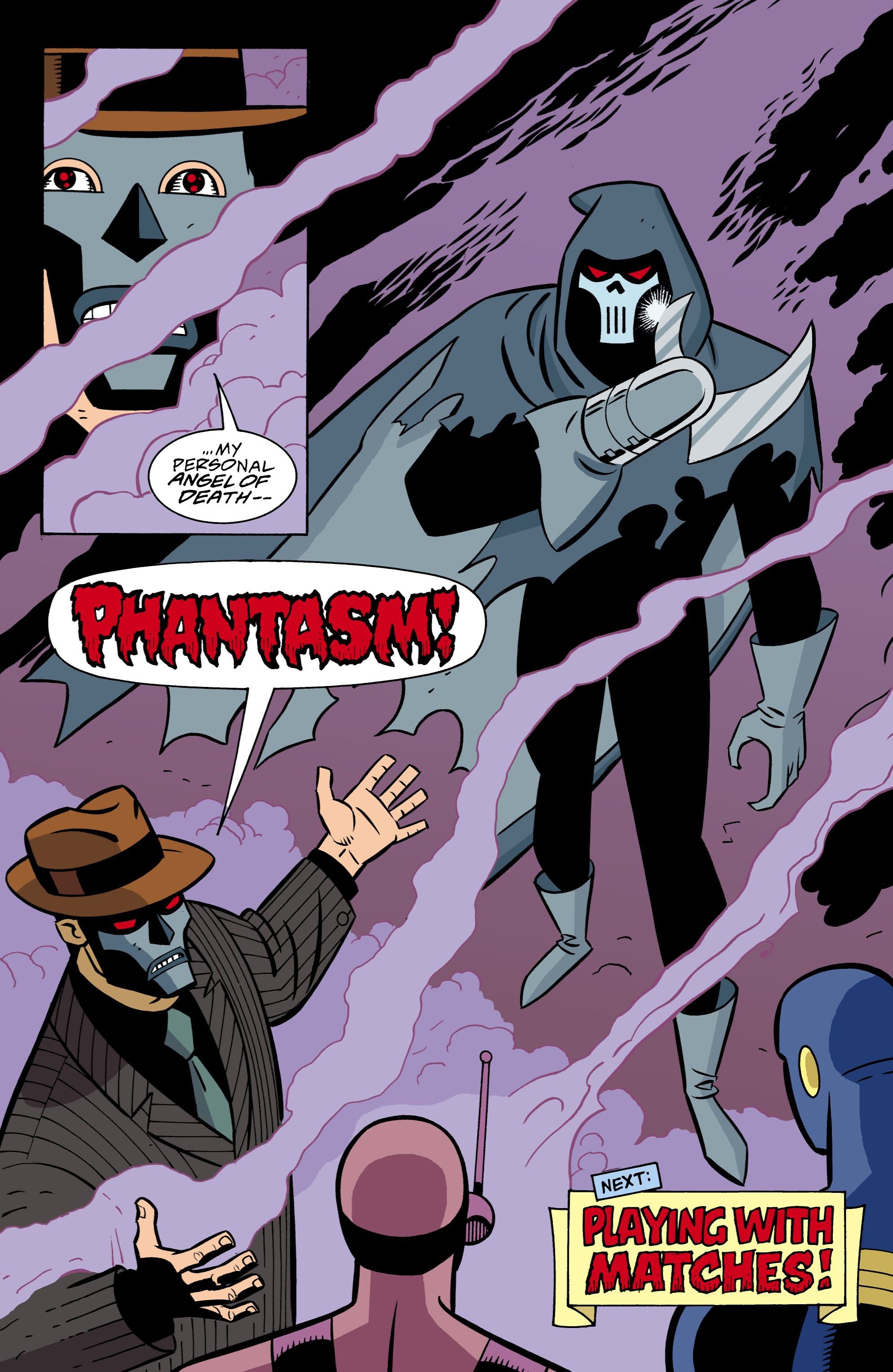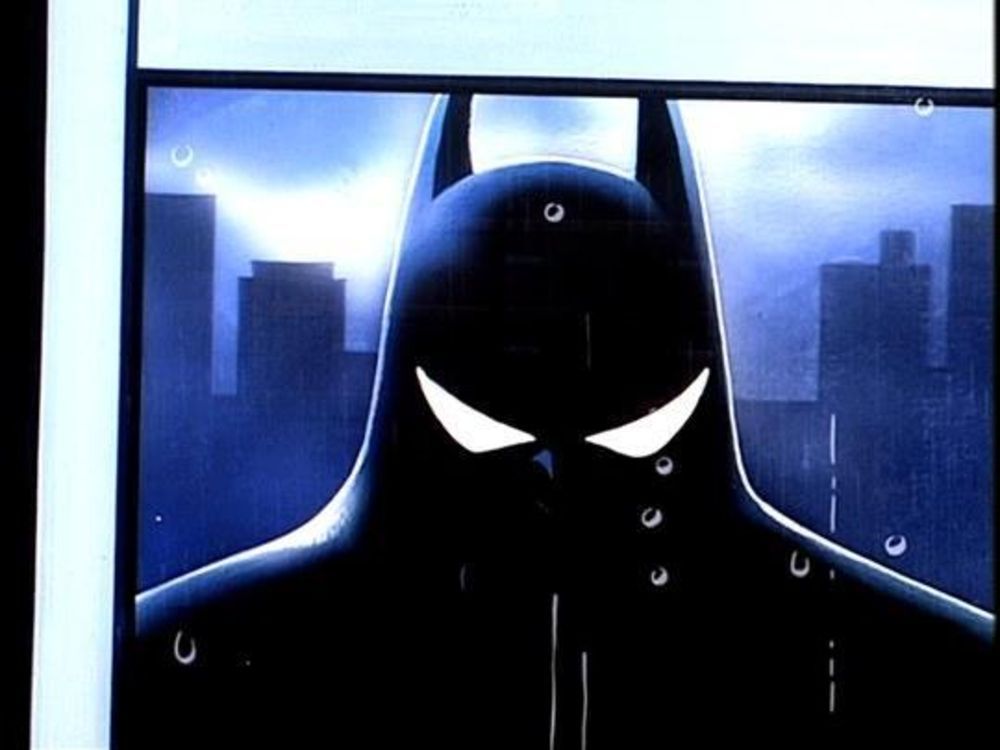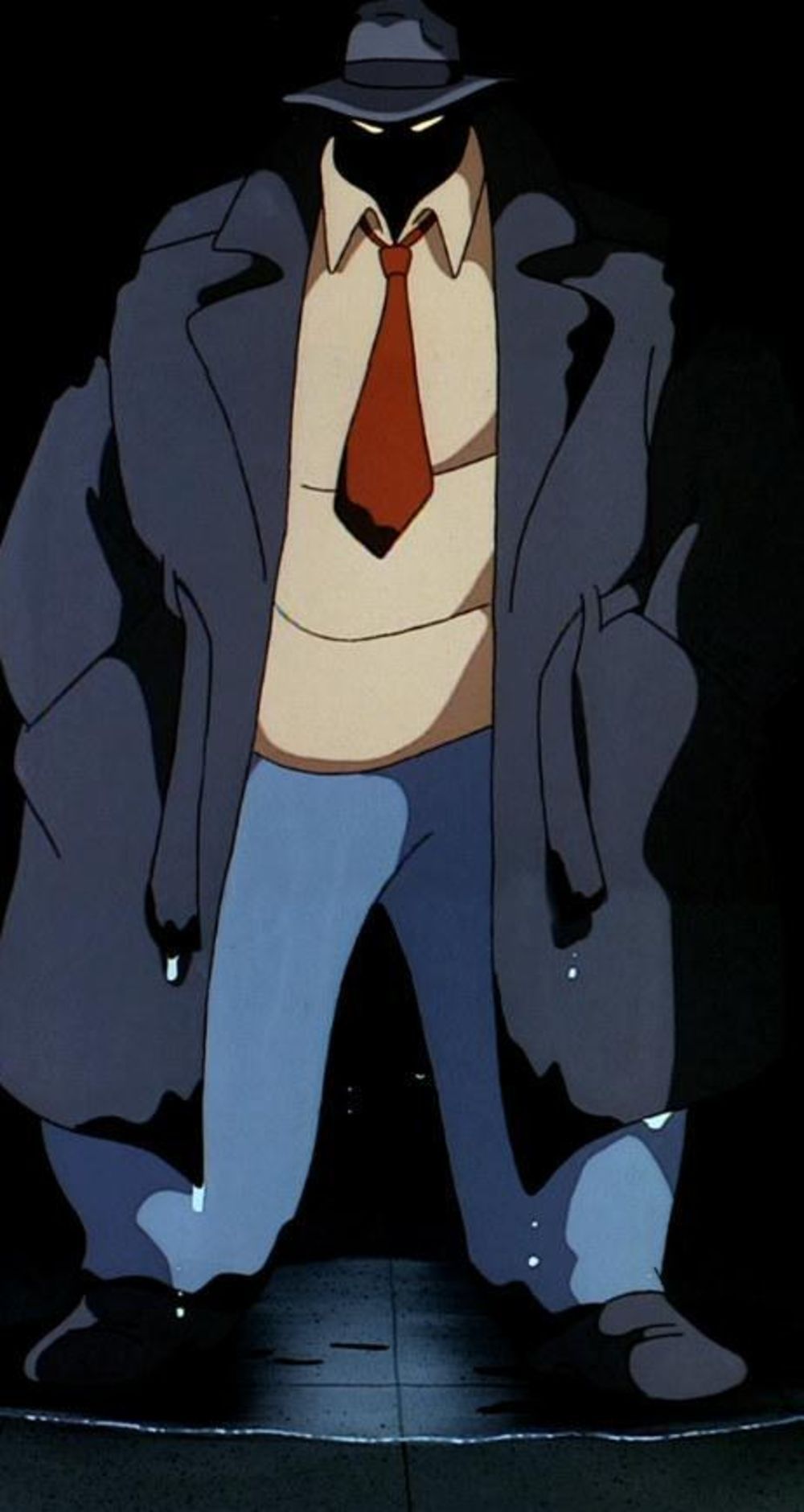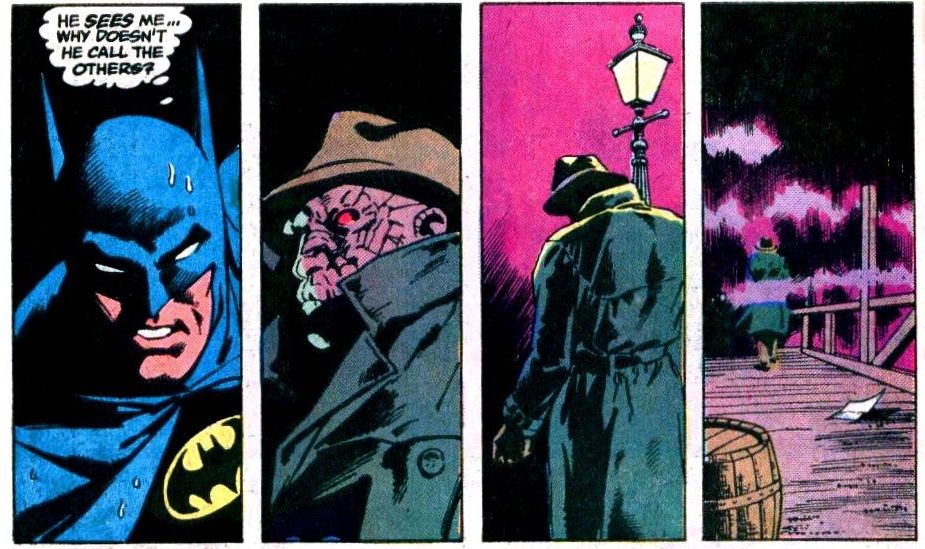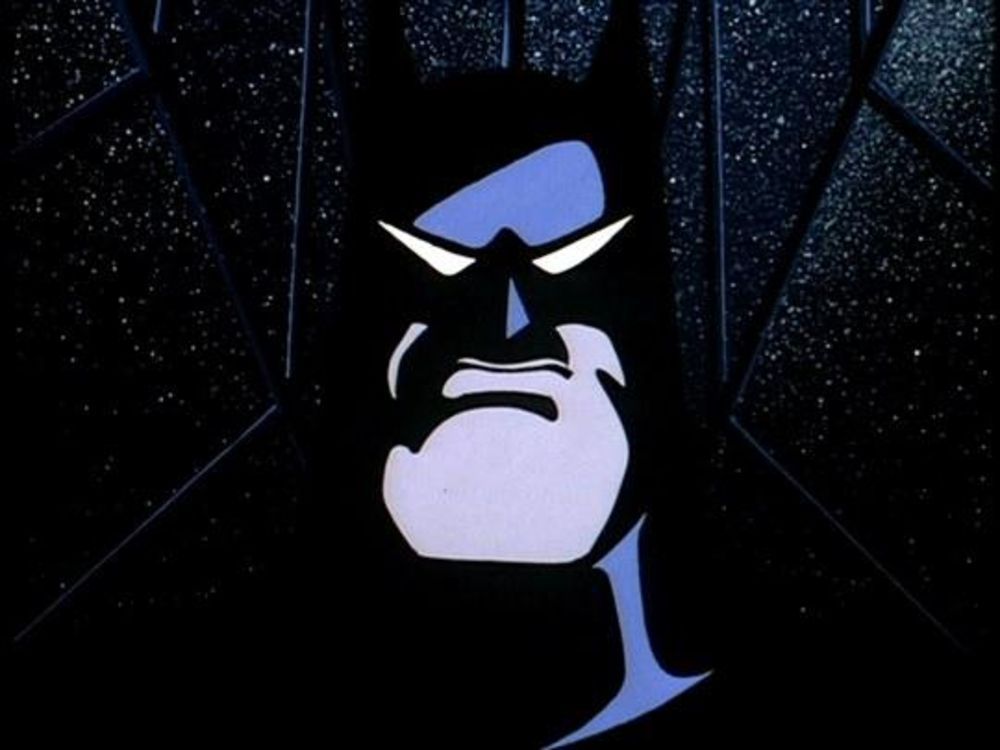Welcome to Adventure(s) Time's eighty-eighth installment, a look at animated heroes of the past. We're continuing this week with a classic episode of Batman: The Animated Series... followed by a comics spinoff I personally view as a classic. If you have any suggestions, leave a comment or contact me on Twitter.
So, this week, two tales of the slovenly Detective Harvey Bullock. Created by writer Doug Moench and artist Don Newton in Batman #361 (April 1983) as a corrupt cop, it didn't take long for Bullock's image to soften. Moench decided he liked the character, and others agreed. Within a few years, Bullock became a steady cast member.
Like many elements of the comics canon, Batman: The Animated Series marks the outside media debut of Bullock. However, there's some speculation regarding the character of corrupt (and slovenly) Detective Max Eckhardt, from 1989's Batman film. They dress identically, you can't deny. And considering writer Steve Englehart's assertions that comics characters had their names changed to avoid any legal issues for the film, it is possible Eckhardt began life as Bullock.
(Seriously, how is this not Harvey Bullock?)
Okay, enough of the movie. Let's get to the show inspired by the massive success of the movie.
Debuting on October 5, 1992, "Vendetta" is another noirish tale from writer Michael Reaves, whose pulpy dialogue sounds more appropriate for a cop show than an afternoon kids' cartoon. The episode takes villain Killer Croc from relative obscurity and introduces him to the show's substantial audience. Well, it takes its time in doing so. Croc is akin to Steven Spielberg's Jaws for most of the episode. He's around the edges, but you're not allowed to actually see him yet.
The story's really about Detective Harvey Bullock, thrown off a case involving the disappearance of mob informant Spider Conway. There's no love lost between Batman and Bullock, as evidenced in "On Leather Wings" (the series pilot) and other episodes. Batman suspects Bullock, who faced bribery charges in the past, is working with "reputable businessman" Rupert Thorne to silence Conway.
Bullock's situation deteriorates, as Batman discovers one of the detective's trademark toothpicks at the docks, not far from the boat explosion that likely killed Conway. Then, Bullock's accused of kidnapping Joey the Snail, another hoodlum he's dealt with in the past. He's arrested, and surely humiliated by making the front page news.
Batman investigates the case during the rainiest night in Gotham, it seems. There's no Robin this episode, but Alfred is here to serve as a sounding board. (Probably a good thing, given the slightly more complex than average plot of the episode.) He makes a reference to Batman's dinner, awaiting him in a "microwavable crock." The word is enough to spark Batman's memories of another lowlife Bullock's dealt with in the past.
And, yes, this kind of "unrelated choice of words inspires the hero to break the case" writing is a standard of mysteries. Complaining about it might be as nitpicky as griping about, I don't know, a moody story set on a "dark and stormy night." But, wow, Batman totally forgot about the circus freak turned wrestler turned strongarm named Killer Croc until just then?
From here, Bruce Wayne brushes up on his studies by physically visiting the zoo and learning that, yes, crocs do live in underwater caves, don't they? Soon enough, he's located Croc's hideout under Gotham, where he's also keeping Spider Conway and Joey the Snail hostage. Batman discerns this case has nothing to do with Thorne at all. It's all about Croc getting revenge on Bullock, who busted him years earlier.
Killer Croc escapes his first encounter with Batman, which might come across as a cheap way to delay the episode's climax. But the actual payoff is a memorable one. Bullock, released from custody, discovers an unwelcome visitor hiding in his backseat. Croc announces himself; makes clear Bullock isn't getting off so easy.
Luckily, there's enough room in Bullock's economy sized vehicle for two shadowy figures lurking in the darkness. Batman also emerges, saving Bullock. Batman's fight with Croc takes them to the sewers, where Croc reveals himself as a physical equal for the Dark Knight. Ultimately, Batman's gadgets and the unstable brickwork of Gotham's aging infrastructure ensure his victory.
Batman returns Croc to the surface, where Harvey is waiting. The detective asks why Batman stuck his neck out for him. He responds that he assumed Harvey to be guilty -- he doesn't apologize exactly, but admits he was wrong. Bullock indicates a willingness to accept Batman's place in Gotham, thus wrapping up one of the loose ongoing arcs of the early episodes. The closing sequence has Batman watching the local news, a smile on his face as Bullock announces he's back and ready to kick butt. (With no public acknowledgment given to Batman, of course.)
Over a decade after the airing of "Vendetta," this Batman interpretation still lived through the Justice League series. And, a tie-in comic most didn't notice. Batman Adventures #5 (October 2003) advances the series' ongoing plotlines, moving away from the Adventures tradition of done-in-ones. It's a rarity in the world of tie-in books, but an indulgence allowed the creators with no new episodes of Batman on the air.
The premise of this Adventures volume has the reader picking up after a "lost season" of Batman. Bruce Wayne is falling in love with socialite Julie Madison. Alfred now mysteriously uses a cane. And Detective Bullock is out of a job at the GCPD. Why? Because of the most shocking shift in Gotham's status quo. Penguin is now the mayor.
(The specifics of Bullock's firing are detailed in this issue's backup. Penguin feels Bullock intentionally embarrassed him while saving his life during an early campaign stop.)
From writer Dan Slott and penciler Ty Templeton comes "Shot to the Heart," the story of Bullock's new life as a private detective. Batman's hired Bullock to dig up anything he can find on Gotham's new mayor. (A nice acknowledgment of the evolution of their relationship.) This doesn't work out so well for Bullock, when his detective partner Ricky Squib is targeted for pictures he took of Penguin a year earlier.
Deadshot, working for Black Mask and his False Face Society (who are themselves working for a mystery figure), now has his sights on Bullock. Interrupting a date with Julie, Batman's called in to help.
Slott, who's clearly up on the lore, makes sure to point out this is the Animated Batman's second encounter with Deadshot. His debut on the Justice League cartoon isn't forgotten. And, really, Deadshot doesn't turn out to be an overwhelming threat for Batman. Bullock, meanwhile, realizes the "scandalous" photos his partner took of the Penguin aren't the motherlode he thought them to be. Penguin, as his former partner Montoya reminds him, isn't married. So photos of him canoodling with young single ladies aren't an issue.
Two more twists, far more severe, at the end, however. One, we learn the identity of the False Face Society's employer. No, it's not the Penguin, but actually Julie Madison!
The idea of Bruce's obsession with Penguin motivating Julie to such extremes is a cute use of the ongoing romantic subplot. Reinventing Julie this way perhaps didn't go over well with the purists, though.
The final twist, one of the major ones of the series, comes in the final two pages. With Deadshot in prison, Black Msk is calling a new "head of eliminations." And it's a figure very familiar to fans of the Animated Series canon.
THE WRAP -UP
DESIGN-Y
Pretty much any shadowy Batman image looks cool, but this one is particularly memorable.
Killer Croc's attempt to disguise himself as Bullock is also an interesting look. (Thanks to the World's Finest for these images, by the way.)
CONTINUITY NOTES
Having debuted in Detective Comics #524 (March 1983), Croc was less than ten years old when the episode aired. Creators Gerry Conway and Gene Colan conceived Croc as the killer of Jason Todd's parents, a decision soon retconned by Crisis. (Which soon revamped the second Robin's origin, making Two-Face the killer.)
The original conception of Killer Croc is that he's essentially human, just an unfortunate soul born with hyperkeratosis. The cartoon never sticks to this. (A skin condition wouldn't exactly give you a steel jaws. Or for a detective to discern your hiding place by visiting the zoo.) Croc became more bestial as the years went on. The comics have also gone this path, even giving him a tail at one point.
The snitch Spider Conway is named in honor of co-creator Gerry Conway. (1970s Marvel fan Bruce Timm is surely aware of Conway's time writing Amazing Spider-Man.) Interestingly, Conway has indicated in the past he's made more in royalties for creating Killer Croc than the Punisher!
HEY, I KNOW THAT VOICE
Robert (Bobby) Costanzo provides the iconic voice of Bullock. He's a character actor who's appeared in numerous dramas. Costanzo might be best remembered as Alphonse Giardella, an important figure in the early episodes of NYPD Blue.
HEY, I'M ADAPTABLE
I wonder if there's an automatic bias against Killer Croc episodes. Was he "too new" a foe for hardcore comics fans to accept? Too reminiscent of a low-rent X-Men villain to fit into Gotham's world? Truthfully, he's making strong appearances in these episodes, but they're rarely remembered as greats.
With practically every exterior scene set against a thunderstorm, "Vendetta" provides director Frank Paur numerous opportunities to exploit cool shadows and fast lightning flashes. Paur's work in other episodes has received a questionable reputation, but with Spectrum handling the overseas animation, he excels. This is one of the finest-looking episodes of the series' run, I'm realizing now. Not only is the mood perfect for Batman, but the figure work here is outstanding. Batman is tall and heroic. Bullock is burly and appropriately (yes) slovenly. And Killer Croc looks like he just might snap Batman in two.
Regarding Bullock, another "new" character, the show seems to have cemented him as a Gotham staple. And Slott/Templeton's Adventures takes advantage of this, and numerous other reference points, to create a worthy continuation of the show. What's impressive is that any of these various threads could work as individual plots. But tying them all together, and essentially working in every character you'd want to see in the TAS world, makes the run that much better.
So that’s all for now. Hey, I've begun a new review series on Chris Claremont's 2000 return to the X-Men on my blog! You can also check out my Kindle Worlds novels for free over at Smashwords.

